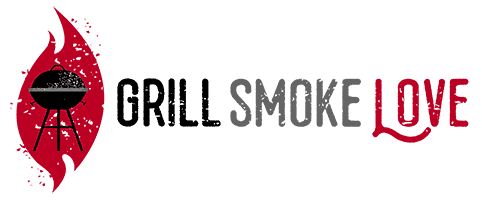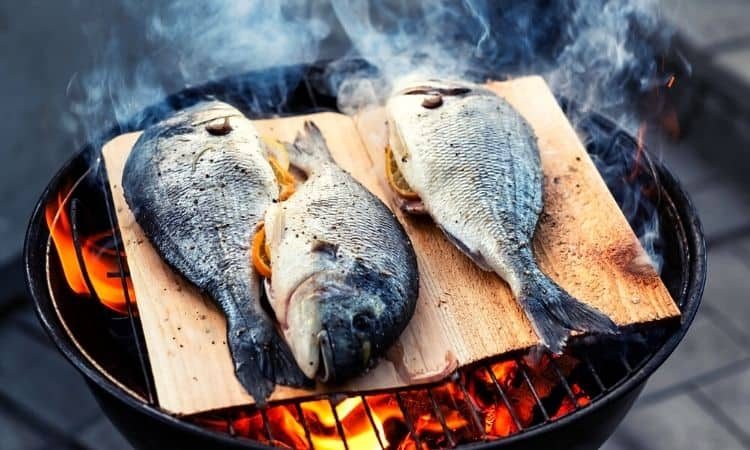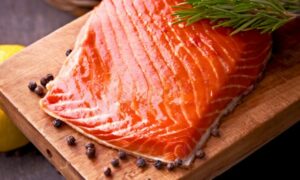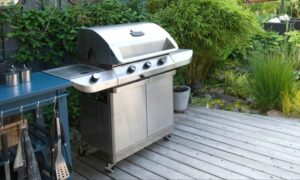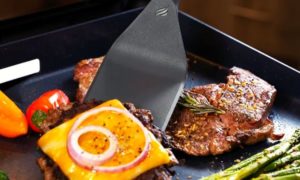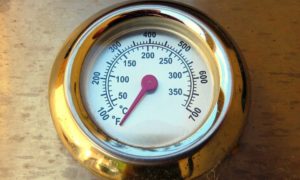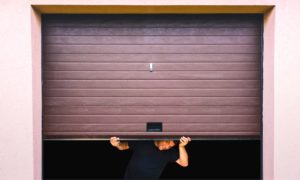Cooking tasty barbecue doesn’t always have to be a complicated process with smoke boxes and special equipment. Everyone knows that you can impart subtle smokiness even with a regular charcoal grill.
But did you know that plank grilling can get more of that flavor right into your food?
As a bonus, it’s easy to do and can be used on any type of grill.
Grilling planks are perfect for fish and many other types of foods. And best of all, reusing cedar planks is totally a thing!
Why Use Cedar Planks for Grilling?
Wood plank grilling is a great way to impart a little extra smokey flavor easily.
Not every food is suitable for throwing down on direct heat. Some things fall apart, and others cook too quickly to pick up much grilling flavor.
The plank is an excellent tool to have in your grilling toolbox — plus, it gives you some new flavors to play around with!
What Are Cedar Planks
Cedar grilling planks are thin pieces of wood used underneath food while it’s being grilled.
The wood is soaked before cooking, so as it heats, the wood steams and lets out smoke. It imparts a gentle smokey quality to the food, which is nice on light meats like fish and chicken.
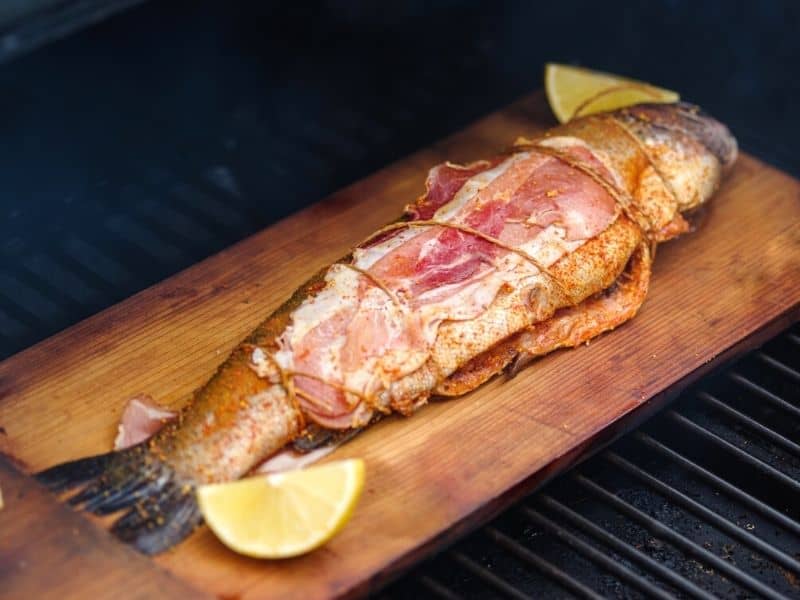
The most common wood used is western red cedar, but this isn’t the only choice.
Cedar has a lovely, deep smokey flavor. However, when you can find them, hickory, maple, cherry, pecan, apple, and alder are all used in plank cooking. And each one imparts a unique flavor profile.
Some stores will even sell you a plank variety pack!
Advantages of Using Cedar Planks
Once you try it, you’ll find plank cooking to be more or less fool-proof. You’ll probably wonder why you hadn’t tried it sooner.
But if you’re still wondering, here are a few reasons to give it a go:
- Easy to use on any type of grill
- Gives smokey results — even on a gas grill
- Planks hold delicate items like fish or veggies, which would otherwise be lost in the grates
- Keeps meat moister than direct cooking
- Extends cook times and gives you better control
- A healthier way to grill as the food doesn’t get charred
- Planks are reusable and cost-effective
How to Use Cedar Planks for Grilling
1. Soak Them
The key to using cedar planks is to make sure that they’re well soaked. If the wood is dry, it will simply burn — adding a flavor that no one wants on their dinner.
Some chefs like to soak their planks in flavor-adding solutions instead of just water. Apple juice, salty brines, or wine all make great flavors to experiment with.
You should soak the plank for a minimum of 30 minutes but more is better.
2. Preheat the Grill
As you preheat the grill, don’t put the plank on until you’re ready to cook.
If you preheat the grill with the plank on the grates, it will dry out and release all that tasty smoke before your food gets to the party!
3. Season the Plank
Once the grill is up to temperature, season the plank by putting it on the grate for a few minutes, giving each side of it a taste of the fire. This keeps the plank from warping and makes the smokey flavors more robust for the food to come.
4. Put the Food on the Plank
Finally, place your food directly on the plank.
You can also place some herbs and/or lemons on the plank. This will wilt in the heat and release a lot of flavor into the food.
If the grill marks are important to your dish, sear your food quickly before cooking it on the plank. That way, you’ll get the look of grilled food but all the benefits of plank-top cooking.
5. Cook and Serve
Plank cooking is more or less a form of indirect cooking, so remember that it will take a little longer than regular direct-heat grilling. You can use a meat thermometer to ensure the food is grilled long enough.
It’s normal for the plank to lose a little bit of its shape as it heats up. If you’ve got small objects like rolling vegetables on them, be careful not to lose them over the side.
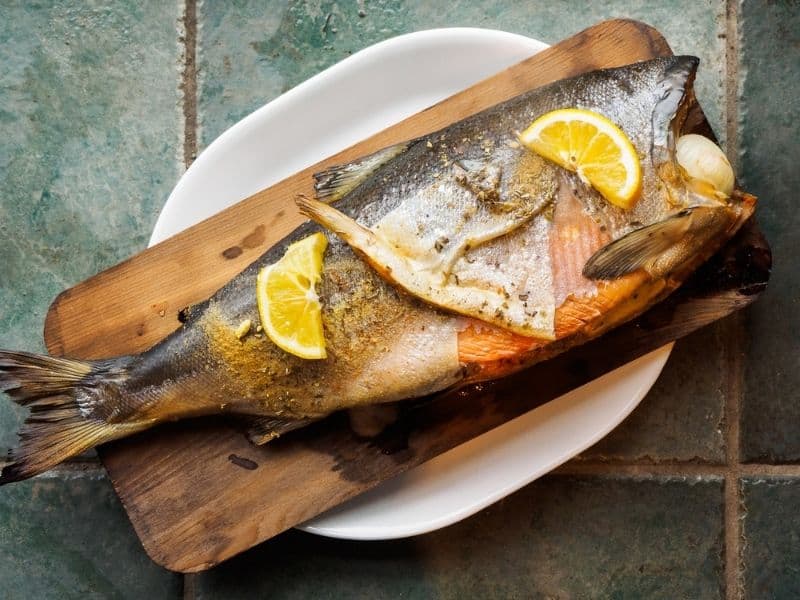
Many chefs like to serve the food right on the plank, which adds a visual treat for your dinner guests.
Reusing Cedar Planks After Grilling
Contrary to popular belief, you can reuse cedar planks. The key to doing so is to clean them well and to admit when it’s time to retire them for good.
The first step to reusing planks is to evaluate their condition after their first use.
If the plank has become thoroughly charred, it’s probably time to give up on it. But oftentimes, you’ll find a plank that only got a little charred around the edges and more or less looks like new.
This is your cue to keep it for next time.
Why Reuse Them?
There are many reasons you might want to reuse a cedar plank.
Here are just a few:
- Flavor sometimes gets more intense on second and third cookings
- Saves money — good quality planks are not cheap
- Better for the environment and reduces waste
- There is no reason not to!
How to Clean Cedar Planks
If you’ve salvaged a few cedar planks that you think you can reuse, you’ll want to clean them well before you put them away for next time.
Resist the urge to use soap — this will only dry out the wood, and it will likely lead to some funky future flavors. Instead, use lots of hot water and scrub the plank thoroughly.
Let the plank dry out after cleaning it.
It’s possible that it may retain some oils from the first cooking. So it’s an excellent idea to use the plank for the same type of food the next time around. In other words, keep fish planks for fish and veggie planks for the vegetables.
Before the next cooking, remember to soak it again.
What Can You Grill With Cedar Planks?
Salmon
Far and away, the most common food that people associate with plank grilling is fish — more specifically, salmon.
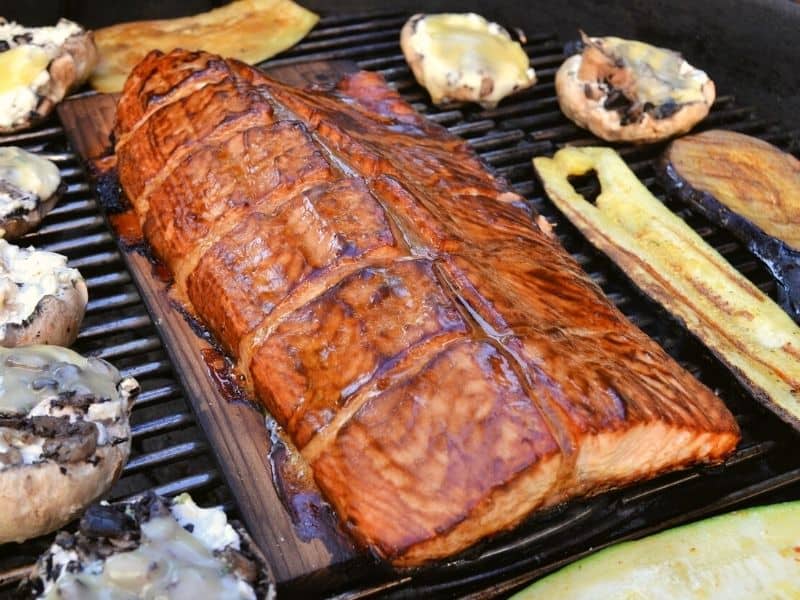
Salmon is a pretty perfect example for a couple of reasons.
For one, it’s challenging to grill large pieces of salmon over direct heat without making a terrible mess. Salmon has a thick fatty layer between the skin and the fish. If you remove the skin, the fish falls apart and gets impossible to get off the grates in one piece. If you grill skin-on, you run the risk of significant flare-ups and a possible mess.
But all that fat helps it pick up the smokey flavors of the plank. So by plank grilling salmon, you’re killing two fish with one grizzly bear, so to speak.
You’re keeping the fish in one piece and tidy while grilling, saving you a ton of cleanup. But you’re also getting an extra flavor boost that you will appreciate at the dinner table.
While cooking fish on cedar planks works well, it’s not the best wood for smoking salmon. that just doesn’t burn well in a smoker.
Other Fish
Other delicate fish make for good plank grilling too. Tilapia, dorado, trout, mahi-mahi, and many others will work great on the plank.
As an added benefit, you can use toppings and flavorings on your plank grilled fish that aren’t options when putting them on direct heat.
For example, garlic butter or a herb paste would burn over direct heat. But on the plank, they’ll combine with the subtle smokiness from the plank to make deliciousness.
If you want to cut your fish into fillets before grilling it, the easiest and fastest way to do it is by using an electric fillet knife.
Steaks, Chicken, Veggies and Mushrooms
Once you start experimenting with plank grilling, you’ll quickly realize that there’s no reason to limit yourself to fish. It’s a great way to cook anything, from light meats like chicken or pork to hearty steaks or chops.
Vegetables can also be cooked on the planks, which is a great way to impart an extraordinary flavor to items that typically don’t grill well.
And that’s not all! One of my favorites is stuffed portobello mushrooms.

Final Thoughts
Cooking and reusing cedar planks, or any type of wood plank, is a great way to impart some extra flavor. And it’s a valuable technique since it gives you an indirect-heat cooking method on any grill.
Have a great barbecue!
